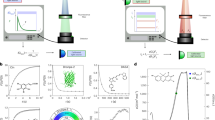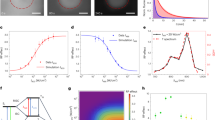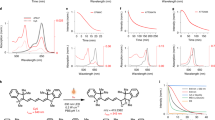Abstract
THE light source usually employed in fluorescence microscopy is a high-pressure mercury vapour lamp; when Coon's antibody technique is used, this source has some disadvantages. The maximum absorption band of the fluorescein isothiocyanate which lies approximately between 440 and 510 nm (the continuous curve in Fig. 1) does not overlap with the mercury emission lines at 365, 405 and 435 nm used for exciting the fluorescence. Another inconvenience arises from the fact that there are two strong mercury lines (546 and 577 nm) in the fluorescence spectrum (the dotted curve in Fig. 1). This latter inconvenience is partially removed by the use of adecvated fluorescence and suppression filters.
This is a preview of subscription content, access via your institution
Access options
Subscribe to this journal
Receive 51 print issues and online access
$199.00 per year
only $3.90 per issue
Buy this article
- Purchase on Springer Link
- Instant access to full article PDF
Prices may be subject to local taxes which are calculated during checkout
Similar content being viewed by others
Author information
Authors and Affiliations
Rights and permissions
About this article
Cite this article
BALS, M., VELCULESCU, V. New High-efficiency Light Source for Immunofluorescence Microscopy. Nature 210, 1073–1074 (1966). https://doi.org/10.1038/2101073a0
Issue Date:
DOI: https://doi.org/10.1038/2101073a0
This article is cited by
-
Fluorescence Microscopy with the Quartz-Iodine Lamp
Nature (1967)
Comments
By submitting a comment you agree to abide by our Terms and Community Guidelines. If you find something abusive or that does not comply with our terms or guidelines please flag it as inappropriate.



